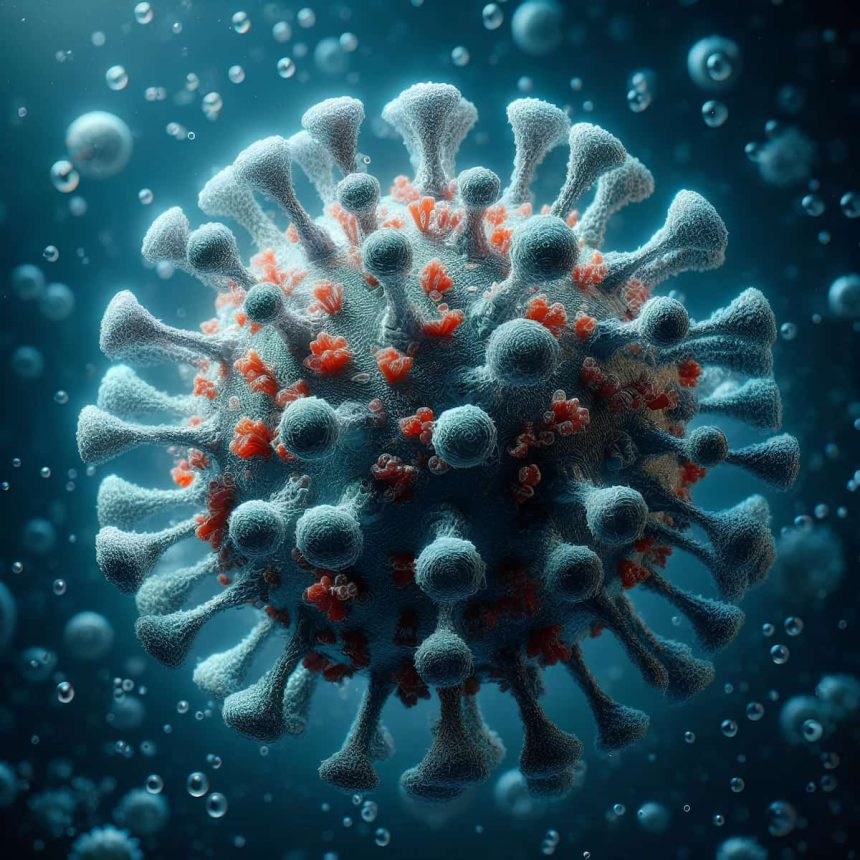A new study published in “Nature” shows that the avian flu variant of the H5N1 virus currently circulating in cows can also infect mice and ferrets. According to the study, the virus replicates in the mammary glands and lungs of these mammals, among other places, and can be transmitted to other animals through milk or breath. This also reveals a possible route of infection to and between humans. The current virus variant thus poses a greater pandemic risk than earlier strains.
The H5N1 virus, originating from Asia, has been circulating in various bird species for several years and has already killed millions of wild birds and livestock worldwide. In recent years, some mammalian species have also occasionally become infected. In spring 2024, milk cows in the United States were reported to have been infected with a highly pathogenic mutant of the avian flu virus H5N1, resulting in reduced milk production. The virus spread rapidly within the herds. Shortly after, there were isolated reports of humans, cats, and poultry becoming infected with the virus through contact with the sick cows on farms.
How exactly H5N1 managed to jump species was previously unclear. It is suspected that the virus may have jumped from sick birds to cows, and from there to other cows, humans, and other animals through contaminated milking equipment or contact with infected mammary glands.
The virus was detected in cow’s milk, among other places. However, if the milk is pasteurized, the virus particles are not infectious, as previous studies have shown. Transmission through breathing is also considered possible, as the virus was also detected in the cows’ noses.
How Does the Virus Behave in Other Mammals?
A team led by Amie Eisfeld from the University of Wisconsin-Madison has now examined in more detail how the current H5N1 variant behaves in other mammals. The virologists also wanted to assess whether the avian flu virus has already adapted to mammals and how great the risk is for further human-to-human transmission and thus for an expansion of the pandemic.
For this purpose, the researchers used influenza viruses from the milk of an infected cow in New Mexico, as well as older strains of H5N1 that had not previously been discovered in cows. They fed various test animals with contaminated milk or had them inhale virus-containing fluid and then examined how the viruses were transmitted and replicated.
Mice and ferrets were used, which are common model animals for influenza diseases in mammals in research.
Transmission Through Milk Most Likely
The analysis showed that both the older and newer versions of the H5N1 viruses were transmitted to the mammals studied. The mice and ferrets were infected both through milk and through the respiratory tract. Unlike the cows showing few or no symptoms, the infected animals became sick or died. The viruses spread throughout the animals’ bodies. The lungs, mammary glands, and nipples were also affected.
The infected mice also effectively passed on the avian flu viruses to their offspring through breast milk, as the virologists found. The viruses were also partially transmitted to other test animals through the fine droplets that all mammals exhale.
However, these animals did not become seriously ill – possibly because the viral load was rather low with this type of transmission, as the researchers report.
Eisfeld and her colleagues conclude that the most likely and previously underestimated route of transmission of the avian flu virus H5N1 from mammal to mammal is through the mammary glands and milk. The respiratory tract plays a subordinate but still important role in infection between mammals.
H5N1 Can Also Infect Human Cells
The virologists then tested on cell cultures whether the H5N1 viruses from cows could jump back to birds and whether they could infect humans. They found that the viruses can indeed bind to the sialic acid receptors in the respiratory tracts of birds and humans. Earlier strains of H5N1 that were not found in cows could not do this.
These findings suggest that the H5N1 variants currently circulating in cows in the United States are more contagious for mammals, including humans, than earlier strains. They have either adapted better to our physiology in cows or already before and could be infectious to us through the respiratory tract as well. “The bovine HPAI H5N1 virus possesses properties that may facilitate infection and transmission in mammals,” the virologists write. This discovery “represents a paradigm shift and increases the pandemic potential of these viruses.”
How Likely Is an Avian Flu Pandemic Among Humans?
The avian flu virus H5N1 is generally transmissible to humans and can lead to mild to severe respiratory diseases or even death in us. However, infection of humans by birds or cows has been rather rare so far. This could change soon with the currently rampant variant, as the study suggests. This also increases the danger of transmission among humans.
However, how effective and rapid a direct transmission of the avian flu variant H5N1 from human to human and thus a pandemic would be is not clear from the study. To find this out, viruses from infected farm workers now need to be examined, according to Eisfeld and her colleagues.


